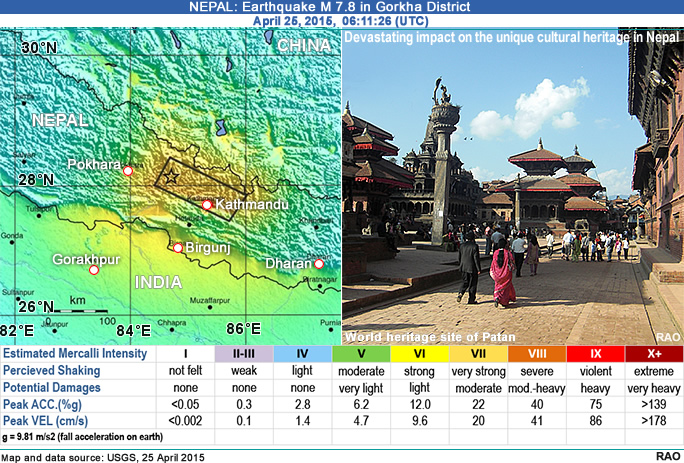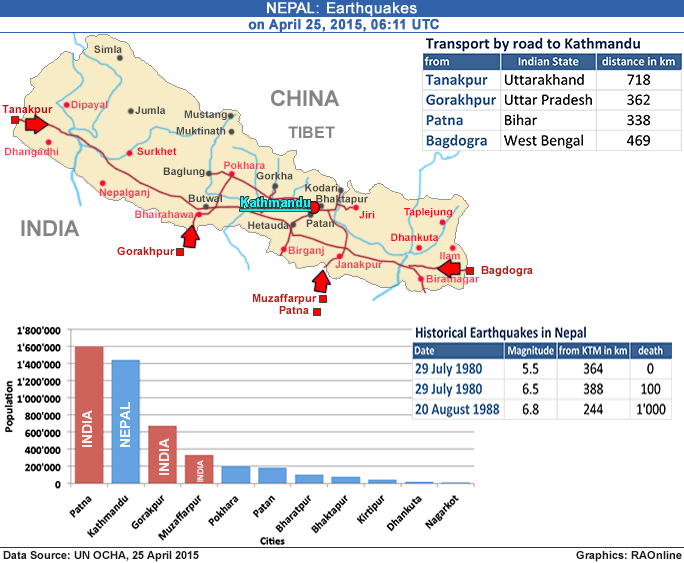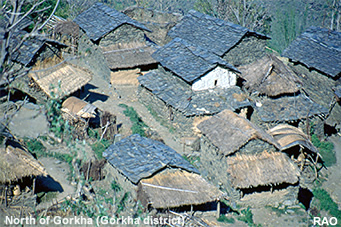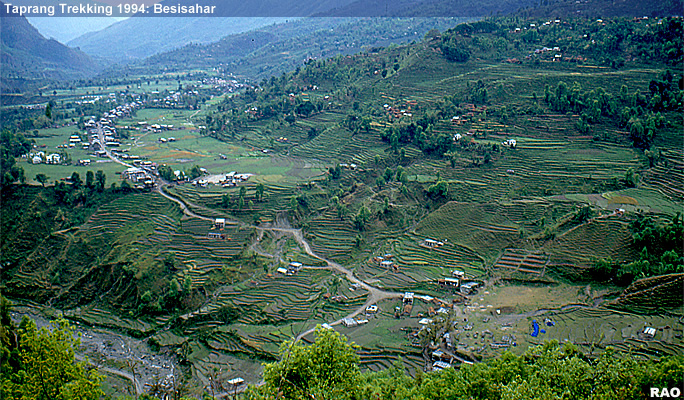 |
Nepal's
Nature Earthquakes |
|
|
 |
| April 2015: A M 7.8 earthquake struck Nepal |
| 25 April 2015 08:00 UTC: Situation Overview |
 |
Most affected areas are Gorkha and Lamjung Districts (north-west of Kathmandu). Damage in Kathmandu Valley limited to historical densely built up neighbourhoods.
- Latest government figures on total causalities are between 700 - 1000. This is expected to increase.
- Government has called emergency meeting with CNDRC followed by Emergency Core Clusters. Updates on this to be shared shortly.
- Total affected population not yet determined but 30 of 75 districts are reported to be affected.
Disaster event
At 11:56 local time, a 7.8 magnitude earthquake struck Nepal, with epicenter in Lamjung District (north-west) of Kathmandu; south of China border).
Impacts
 |
| Government reporting 30 out of 75 districts affected in the Western and Central Regions, including Kathmandu Valley districts. This includes mountain and hilly areas, disperse rural populations as well as some very densely populated districts and Nepal’s 2 largest cities – greater Kathmandu and Pokhara. Most affected districts are Sindulpalchowk, Kavre, Nuwakot, Rasuwa, Dolakha in the CR and Kaski, Gorkha, Lamjung in the WR.Initial reports from UN field offices are that the Eastern Region is not badly affected and Terrai has been minimally affected. |
|
 |
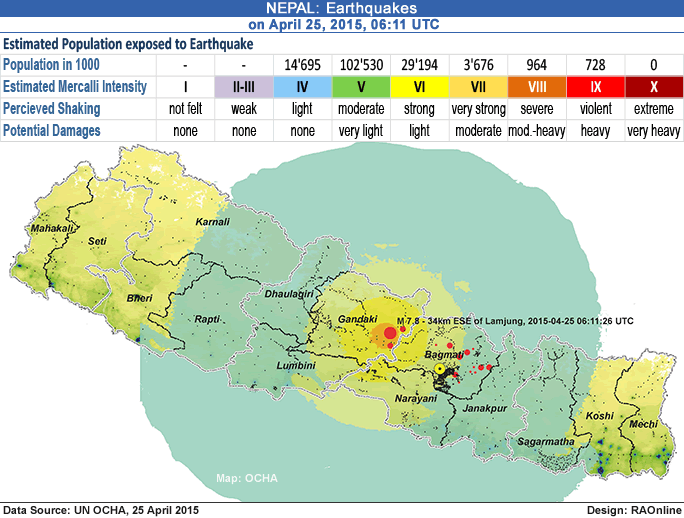 |
 |
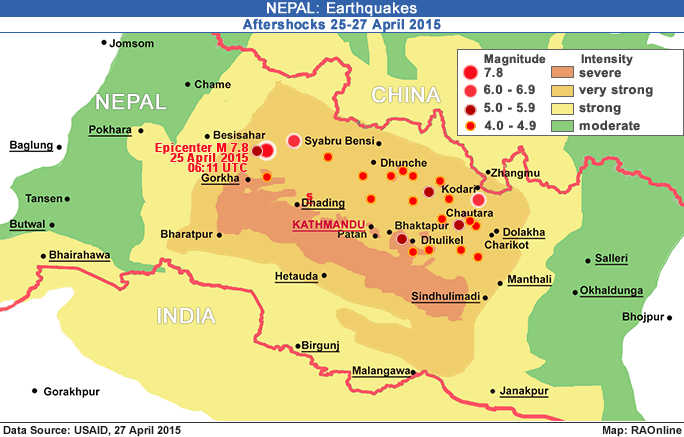 |
 |
 |
In Kathmandu Valley, hospitals area overcrowded, running out of room for storing dead bodies and also running short of emergency supplies.BIR hospital is treating people in the streets. There are reports that the hospital emergency stocks are depleting/used up and there is a need for a government decision on bringing kits from the military.
Majority of population remaining outside houses due to fear of aftershocks and structural damage to buildings.
 |
| Source: UN, Office of the Resident Coordinator Nepal, 25 April 2015 |
top
| A Socio-Demographic Impact Study |
 |
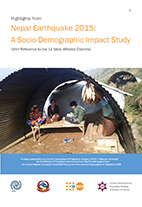 |
| Source: UNFPA the United Nations Population Fund |
 |
| Nepal Earthquake 2015: |
| A Socio-Demographic Impact Study |
| (With Reference to the 14 Most Affected Districts) |
| 2016 |
| A study conducted by the Central Department of Population Studies (CDPS), Tribhuvan University for the Ministry of Population and Environment (MoPE) |
 |
| 1.3 MB |
 |
|
|
 |
|
| Nepal Trekkings in the Gorkha Region |
|
Nepal |
|
Links
|
 |
 |
 |
External
link |
|


